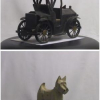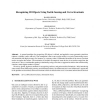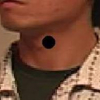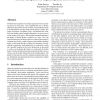302 search results - page 17 / 61 » Intersecting with Unaware Objects |
ICCV
2005
IEEE
16 years 2 months ago
2005
IEEE
We explore the performance of a number of popular feature detectors and descriptors in matching 3D object features across viewpoints and lighting conditions. To this end we design...
106
click to vote
JMIV
2000
15 years 9 days ago
2000
A general paradigm for recognizing 3D objects is offered, and applied to some geometric primitives (spheres, cylinders, cones, and tori). The assumption is that a curve on the surf...
105
click to vote
CVPR
2005
IEEE
16 years 2 months ago
2005
IEEE
This paper addresses the subspace properties and the recovery of articulated motion. We point out that the global motion subspace of an articulated object is a combination of a nu...
107
Voted
IROS
2006
IEEE
15 years 6 months ago
2006
IEEE
Model-based recognition of an object typically involves matching dense 3D range data. The computational cost is directly affected by the amount of data of which a transformation n...
107
click to vote
SMA
2010
ACM
15 years 22 days ago
2010
ACM
Electrophysiological modeling of dendrites and other neurological processes is generally done in a simplified manner, by treating these structures as a series of cylinders (aka ca...




